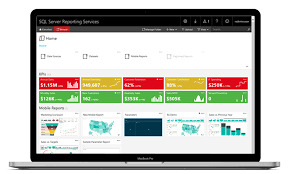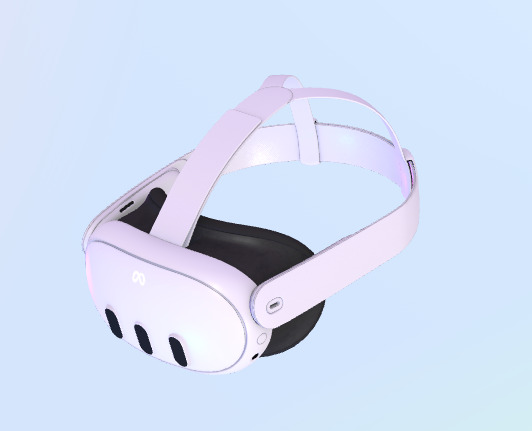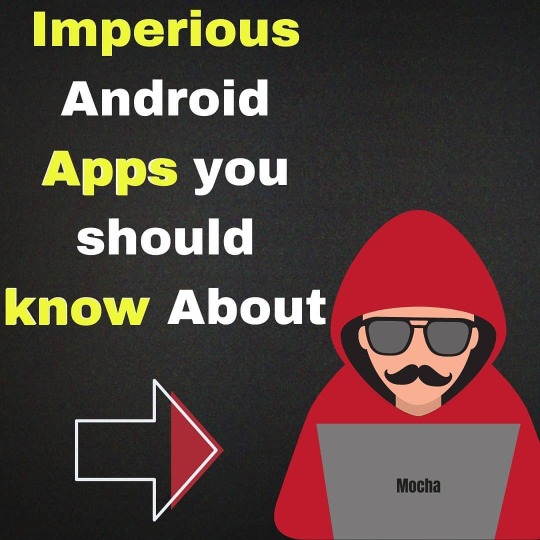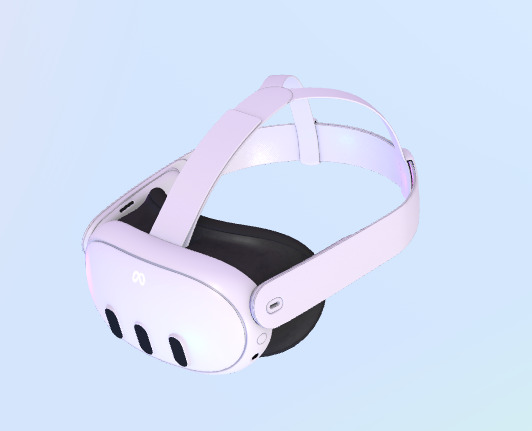#techreport
Explore tagged Tumblr posts
Text
Report Shows OpenTelemetry’s Impact on Go Performance
Observability in software development has become a cornerstone for building reliable and efficient systems. A recent report highlights OpenTelemetry’s impact on Go performance, shedding light on how this open-source observability framework influences the efficiency of applications written in the Go programming language. As Go, also known as Golang, continues to gain traction for its simplicity and performance in cloud-native environments, understanding the implications of integrating tools like OpenTelemetry is crucial for developers aiming to optimize their systems.
This blog explores the findings of the report, diving into how OpenTelemetry affects Go applications, its benefits, challenges, and practical considerations for developers. With observability becoming a non-negotiable aspect of modern software, this analysis provides insights for Go developers seeking to balance performance with robust monitoring.
What is OpenTelemetry and Why It Matters for Go
OpenTelemetry is an open-source project under the Cloud Native Computing Foundation (CNCF) that provides a standardized way to collect, process, and export telemetry data, including traces, metrics, and logs. For Go developers, it offers a powerful toolkit to gain visibility into application behavior, especially in distributed systems like microservices architectures. Go’s lightweight concurrency model and fast execution make it a popular choice for high-performance applications, but without proper observability, debugging and optimizing these systems can be challenging.
The report emphasizes that OpenTelemetry’s integration with Go enables developers to instrument their code efficiently, capturing critical data about request latencies, error rates, and system resource usage. This visibility is essential for identifying bottlenecks and ensuring applications run smoothly in production.
The Role of Observability in Go Applications
Go’s design prioritizes simplicity and performance, making it ideal for building scalable systems. However, as applications grow in complexity, developers need tools to monitor and understand their behavior. OpenTelemetry fills this gap by providing a standardized approach to observability, allowing developers to collect telemetry data without relying on proprietary solutions. This standardization is particularly valuable in Go, where minimalism is a core principle, as it aligns with the language’s philosophy of avoiding unnecessary complexity.
Key Findings on OpenTelemetry’s Impact on Go Performance
The report provides a detailed analysis of how OpenTelemetry affects Go applications, focusing on performance metrics such as latency, throughput, and resource consumption. While OpenTelemetry enhances observability, it introduces some overhead, which developers must carefully manage to maintain Go’s hallmark efficiency.
Performance Overhead of Instrumentation
One of the primary concerns for Go developers is the potential performance cost of adding observability. The report reveals that OpenTelemetry’s instrumentation, when properly configured, introduces minimal overhead—typically less than 5% in terms of CPU and memory usage for most workloads. This is a testament to Go’s efficiency and OpenTelemetry’s lightweight design. However, in high-throughput systems processing millions of requests per second, even small overheads can accumulate, requiring developers to optimize their instrumentation strategies.
For instance, the report notes that excessive tracing or poorly configured sampling can increase latency. By using techniques like adaptive sampling, where only a subset of requests is traced, developers can mitigate this impact while still gaining valuable insights.
Benefits of Enhanced Observability
Despite the minor overhead, the report underscores the significant benefits of OpenTelemetry’s impact on Go performance. By providing detailed traces and metrics, OpenTelemetry helps developers pinpoint performance issues quickly. For example, in a case study highlighted in the report, a Go-based microservice reduced its average request latency by 20% after using OpenTelemetry to identify a bottleneck in a database query. This kind of actionable insight is invaluable for maintaining high-performing systems.
Moreover, OpenTelemetry’s compatibility with popular observability platforms like Prometheus, Jaeger, and Grafana allows developers to visualize and analyze data effectively, further enhancing their ability to optimize Go applications.
Challenges of Implementing OpenTelemetry in Go
While the benefits are clear, integrating OpenTelemetry into Go applications is not without challenges. The report outlines several considerations developers must address to ensure successful adoption without compromising performance.
Configuration Complexity
OpenTelemetry’s flexibility comes with a learning curve. Configuring exporters, samplers, and processors requires a deep understanding of both the tool and the application’s architecture. The report notes that misconfigurations, such as overly verbose logging or incorrect sampling rates, can lead to performance degradation. For Go developers, who often prioritize simplicity, this complexity can feel counterintuitive.
To address this, the report recommends starting with minimal instrumentation and gradually expanding as developers become familiar with OpenTelemetry’s components. Using Go-specific libraries, such as the OpenTelemetry Go SDK, can also simplify the process.
Balancing Observability and Performance
Another challenge is striking the right balance between observability and performance. The report highlights that excessive telemetry collection can strain system resources, particularly in resource-constrained environments like edge computing. Developers must carefully select which metrics and traces to collect, focusing on those that provide the most value for debugging and optimization.
Best Practices for Using OpenTelemetry with Go
To maximize the benefits of OpenTelemetry’s impact on Go performance, the report offers several best practices for developers. These strategies help minimize overhead while ensuring robust observability.
Optimize Sampling Strategies
Sampling is a critical factor in managing OpenTelemetry’s performance impact. The report suggests using probabilistic or rate-based sampling to reduce the volume of telemetry data without sacrificing visibility. For high-traffic Go applications, adaptive sampling—where the sampling rate adjusts based on system load—can further optimize performance.
Leverage Context Propagation
Go’s concurrency model, with its goroutines and channels, requires careful handling of request context. OpenTelemetry’s context propagation ensures that telemetry data is correctly associated with the right request, even in highly concurrent systems. The report emphasizes the importance of properly propagating context to avoid gaps in traces, which can obscure performance issues.
Monitor Resource Usage
To prevent unexpected performance hits, developers should monitor the resource usage of OpenTelemetry itself. Tools like Prometheus can track the CPU and memory overhead of instrumentation, allowing developers to fine-tune configurations as needed.
Real-World Applications and Success Stories
The report includes several case studies demonstrating OpenTelemetry’s impact on Go performance in real-world scenarios. One notable example is a fintech company that used OpenTelemetry to optimize a Go-based payment processing system. By analyzing traces, the company identified inefficiencies in its API calls, reducing transaction times by 15% and improving customer satisfaction.
Another case study involves a cloud-native startup that integrated OpenTelemetry into its Go microservices. The detailed metrics provided by OpenTelemetry allowed the team to scale their infrastructure more efficiently, reducing costs while maintaining performance.
Future Outlook for OpenTelemetry and Go
As observability continues to evolve, OpenTelemetry is poised to become a standard tool for Go developers. The report predicts that future improvements in OpenTelemetry’s Go SDK will further reduce overhead and simplify integration. Additionally, advancements in automated instrumentation could make it easier for developers to adopt OpenTelemetry without extensive manual configuration.
The growing adoption of Go in cloud-native and serverless environments also underscores the importance of tools like OpenTelemetry. As more organizations rely on Go for critical workloads, the ability to monitor and optimize performance will be a key differentiator.
OpenTelemetry’s impact on Go performance is a game-changer for developers building high-performance, observable systems. While it introduces some overhead, the benefits of enhanced visibility and actionable insights far outweigh the costs when implemented thoughtfully. By following best practices like optimized sampling and context propagation, Go developers can harness OpenTelemetry to build faster, more reliable applications.
As the report demonstrates, OpenTelemetry empowers developers to unlock the full potential of their Go applications, ensuring they remain performant in even the most demanding environments. For Go developers looking to stay ahead in the world of observability, embracing OpenTelemetry is a step toward building more robust and efficient systems.
#OpenTelemetry#GoLang#Performance#Observability#Monitoring#Telemetry#GoDevelopment#SoftwarePerformance#Benchmarking#DistributedTracing#Metrics#Logs#Profiling#TechReport#DevOps#CloudNative#ApplicationPerformance#Optimization
0 notes
Text
SSRS in Action: Visualizing Big Data for Decision Making
In today's data-driven world, effective reporting is crucial for informed decision-making. SQL Server Reporting Services (SSRS) provides a powerful platform for creating, deploying, and managing reports for organizations of all sizes. In this blog, we will explore how SSRS can transform raw data into insightful visualizations, aiding businesses in making strategic decisions.
Introduction to SQL Server Reporting Services (SSRS)
SQL Server Reporting Services (SSRS) is a server-based reporting platform that enables the creation of interactive, tabular, graphical, or free-form reports from relational, multidimensional, or XML-based data sources. Whether you are a business analyst, data engineer, or decision-maker, SSRS offers tools to design, publish, and manage reports that can be delivered over the web or via email.
One of SSRS's key strengths is its integration with Microsoft SQL Server, which allows for seamless data retrieval and manipulation. The platform provides a range of tools that cater to varying levels of expertise, from simple report builders to advanced design tools for complex reporting needs.

SSRS
Creating Parameterized Reports
Parameterized reports in SSRS allow users to input specific criteria, providing flexibility and control over the data that is displayed. This feature is particularly useful for generating reports that need to adapt to different user requirements or scenarios.
For instance, a sales report might include parameters for date range, region, or product category. By inputting these parameters, users can generate targeted reports that hone in on the specific data they need, rather than sifting through irrelevant information. This not only saves time but also enhances the precision of the data analysis.
Designing Dashboards and Charts
Data visualization is a critical aspect of effective reporting. SSRS offers a variety of tools to design dashboards and charts that provide a clear and concise presentation of data trends and patterns. With SSRS, users can create custom dashboards that combine several reports into a single, cohesive view, making it easier to monitor key performance indicators (KPIs) and business metrics.
Charts in SSRS can range from simple bar graphs and pie charts to more complex data visualizations like heat maps or scatter plots. The ability to customize these visualizations allows for a tailored presentation that aligns with the specific needs of the organization.

SSRS Dashboard
Publishing Reports for End-Users
Once reports are created and tested, SSRS makes it easy to publish them for end-user access. Reports can be deployed to a report server, where they can be managed, secured, and shared with users across the organization. SSRS supports a variety of formats for report delivery, including HTML, PDF, Excel, and Word, ensuring compatibility with different user preferences and technical requirements.
The platform also supports scheduled report delivery, allowing users to receive updated reports automatically via email or save them to a shared location. This automation reduces manual effort and ensures that stakeholders always have access to the most recent data.
Embedding SSRS in Web Portals
SSRS can be embedded in web portals, providing seamless integration with existing web applications. This feature enhances the user experience by allowing users to access reports within familiar environments, without the need to switch between different applications.

SSRS Web Portal
By embedding SSRS reports into web portals, organizations can provide a unified interface for data access and analysis. This integration can be achieved through the use of the SSRS REST API, which enables developers to customize report embedding to meet specific business needs.
FAQ
1. What are the system requirements for SSRS? SSRS requires a compatible version of Microsoft SQL Server, Windows Server, and .NET Framework. It's advisable to check the official documentation for specific version compatibility.
2. Can SSRS handle real-time data reporting? While SSRS is designed for scheduled reporting, it can be configured to display near-real-time data by frequently updating the data source and refreshing the reports.
3. Is it possible to customize the look and feel of SSRS reports? Yes, SSRS offers a range of design tools that allow for customization of report layouts, styles, and themes to align with corporate branding and design preferences.
4. How does SSRS ensure data security? SSRS provides role-based security features, allowing administrators to control access to reports and data sources based on user roles and permissions.
5. Can SSRS be integrated with other Microsoft tools? Yes, SSRS integrates seamlessly with other Microsoft tools such as Power BI, SharePoint, and Excel, enhancing its functionality and versatility in business environments.
In conclusion, SQL Server Reporting Services is a robust tool for transforming data into actionable insights. Its comprehensive features for report creation, customization, and deployment make it an essential component for any organization looking to leverage big data for strategic decision-making.
Home
instagram
youtube
#SSRS#DataReporting#SQLReports#BusinessIntelligence#ReportAutomation#DataVisualization#SQLServer#SunshineDigitalServices#TechReporting#BIInsights#Instagram#Youtube
0 notes
Text
PCE Personal Care Exhibition and TEMU Link Again🎉 PCE个护用品展 | TEMU再次联动 🤩TEMU Product Selection Conference: Link to Overseas Markets & Seek Global Consumer Dividends together!🥳 🛒TEMU选品大会 | 链接海外市场,共谋全球消费红利! On March 6th, Guangzhou Nanfeng International Convention and Exhibition Center💖Come and scan the code to join us😆!! 3月6日,广州南丰国际会展中心💗快来扫码加入我们!!
🐼China is a world factory of personal protective appliances, and by 2028, the global market size of personal protective appliances will reach 218.612 billion yuan, with a compound annual growth rate of 8.73%, and the cross-border market share will continue to grow. 👀According to SensorTower and TechReport data, as of October 23, TEMU has downloaded 235 million times, making it the world's number one and most downloaded e-commerce platform. It has covered 48 countries including North America, Europe, South America, the Middle East, Southeast Asia, Japan, and South Korea, with the highest growth rate of new users. TEMU exports over 400000 packages per day, with an average daily weight of 600 tons, driving the rapid export of personal protective equipment industry belts such as Guangzhou, Shenzhen, Jiangsu and Zhejiang.
#nanfung#expochina2024#personal care expo#china expo#guangzhou#public exhibition#trade shows#personal care#china#pce#personal care appliances#temuapp#temu
2 notes
·
View notes
Text
Meghan Markle, Prince Harry 'not worth the hassle' anymore, says paparazzo
Meghan and Harry were allegedly doing ‘mock photo-ops’ when they first moved to LA The Meghan Markle and Prince Harry frenzy is fading, at least in the eyes of paparazzi. Longtime LA-based photographer Mark Karloff told Techreport via The Post that the Duke and Duchess of Sussex are no longer the hot-ticket subjects they once were. “When Harry and Meghan first came here [to California], it was a…
0 notes
Text
The importance of community: social engagement in the Metaverse
Imagine stepping into a virtual world where the boundaries between physical and digital are blurred. This is the metaverse. In this space, social networks are not just platforms, but entire worlds where users can interact in real-time in three-dimensional environments. With the development of virtual reality (VR) and augmented reality (AR), these interactions have become rich, nuanced and increasingly lifelike.

Source: https://www.meta.com/au/quest/quest-3/?utm_source=gg&utm_medium=ps&utm_campaign=20544616212&utm_term=meta%20quest%203&utm_content=688564931226&utm_funnel=dcap&gad_source=1&gclid=EAIaIQobChMIlsCnobHkhQMVIVYPAh3FaAaOEAAYASAAEgJTnfD_BwE&gclsrc=aw.ds
In the burgeoning digital landscape of the metaverse, social networks and online communities have transcended traditional boundaries. We are witnessing a revolutionary shift in which digital interaction is becoming an immersive experience, fundamentally redefining community engagement.
According to a 2022 report by Techreport, the number of active online users in the metaverse is around 400 million (https://techreport.com/statistics/metaverse-statistics/). These virtual spaces have become centres of vibrant social interaction, with an average Metaverse penetration rate by 2030 of 27% across different countries (https://techreport.com/statistics/metaverse-statistics/).
Community engagement is therefore a key factor. In the metaverse, this goes beyond likes and comments. It includes collaborative creation, shared experiences and synchronous interaction. Lee et al. (2023) found that users feel a stronger sense of belonging in the Metaverse when they participate in community-driven events within these platforms and when they are using Avatars to identify themselves with (https://doi.org/10.1089/cyber.2022.025).
The implications for businesses are huge. According to Bain, the metaverse could reach a market size of $700 billion to $900 billion by 2030 (https://www.bain.com/insights/taking-the-hyperbole-out-of-the-metaverse-tech-report-2023/). This sizeable economic opportunity is recognized by a variety of sectors including gaming, entertainment, and even real estate. With such projections, it's clear that the metaverse will likely become a central hub for a range of activities and could play a pivotal role in shaping future social and economic interactions.
Looking ahead, the potential for social networking in the metaverse seems limitless. Many social interactions could take place in virtual spaces, with the metaverse as the central hub.
But at the heart of this digital revolution is the human element - our innate desire to connect, share and grow together. Online communities in the Metaverse fulfil this need on an unprecedented scale, providing a canvas for human expression that is as limitless as the imagination. What do you wish for in online communities? Do you think the possibilities in the Metaverse will be able to fulfill your needs more than current social media platforms?
The Metaverse seems to be more than a technological marvel; it is a testament to the interconnectedness of humanity. Right now, as we continue to explore and engage in this new terrain, we should do so with the understanding that these spaces are not just playgrounds for innovation, but communities that reflect our collective spirit and that great communities can arise from this.
0 notes
Text
#ばばさん通信ダイジェスト : サーバーレスの次はなんなんだ
賛否関わらず話題になった/なりそうなものを共有しています。
サーバーレスの次はなんなんだ
https://zenn.dev/nekoruri/articles/techreport-202312-beyond-serverless
0 notes
Text
Electing the Doge of Venice: analysis of a 13th Century protocol
https://www.hpl.hp.com/techreports/2007/HPL-2007-28R1.html
0 notes
Photo

Useful android Apps For Everyone. For more Follow @thecrazynerd_ ● ● #apps #appstore #playstore #appleappstore #appleapps #appoftheweek #bestwebsite #techreport #technews #todaytechnews #technewsindia #tech #technology #techtips #techtricks #tipsandtricks #plagiarism #checker #websites #infograma #infogram #zoom #crazyapps #techweek https://www.instagram.com/p/CXRY93FjK6f/?utm_medium=tumblr
#apps#appstore#playstore#appleappstore#appleapps#appoftheweek#bestwebsite#techreport#technews#todaytechnews#technewsindia#tech#technology#techtips#techtricks#tipsandtricks#plagiarism#checker#websites#infograma#infogram#zoom#crazyapps#techweek
0 notes
Photo

But @nvidia, You Promised! Well, its not a disappointment at all but thats what they said, right? Its still the most powerful card on the market with half the price of previous king the 2080ti. It does not perform 2x as the 2080ti but it still performs much better. @nvidiageforce @nvidia reached out to tell that double performance was to be mentioned for @quake 2 rtx and @minecraft rtx games. Performance is still great as you can see from the benchmark results. I hope this was fun or helpful for you. If you like tech and gaming, be sure to hit the follow button and turn on the post notifications so you dont miss out any of our posts! #nvidia #rtx #rtxon #rtx3080 #3080benchmarks #gamingbenchmarks #graphiccard #nvidiageforce #rtx3080benchmarks #benchmarks #gpucomparison #pchardware #pccomponents #gaming #gaminghardware #gamingpc #tech #technology #technologyfacts #techreports #amd #nvidiartx #computerhardware #computers https://www.instagram.com/p/CFPmqbyFQqv/?igshid=lcf8wqn3t1of
#nvidia#rtx#rtxon#rtx3080#3080benchmarks#gamingbenchmarks#graphiccard#nvidiageforce#rtx3080benchmarks#benchmarks#gpucomparison#pchardware#pccomponents#gaming#gaminghardware#gamingpc#tech#technology#technologyfacts#techreports#amd#nvidiartx#computerhardware#computers
0 notes
Photo

FuturePreviews.com correspondent @nautilinn sharing cool tech finds from NAB 2017. [Click now in bio] #FuturePreviews . . . . #newtechnologies #newtech #newgadget #newgadgets #nab2017 #newtechnology #3dtechnology #3dtech #dronelife #dronelifestyle #newdrone #commercialdrone #futuretech #consumertech #hologram #holograms #techreport #techreporter #consumerelectronics #interviews #interview #documenting #techpreview
#dronelife#documenting#newtech#nab2017#newgadget#interviews#holograms#techreporter#interview#3dtechnology#consumertech#newgadgets#hologram#futuretech#consumerelectronics#techreport#newdrone#futurepreviews#commercialdrone#newtechnology#3dtech#newtechnologies#techpreview#dronelifestyle
0 notes
Photo

Techreport's RTX Super vs Navi head-to-head https://ift.tt/33KTbbC
2 notes
·
View notes
Text

The importance of community: social engagement in the Metaverse
Imagine stepping into a virtual world where the boundaries between physical and digital are blurred. This is the metaverse. In this space, social networks are not just platforms, but entire worlds where users can interact in real-time in three-dimensional environments. With the development of virtual reality (VR) and augmented reality (AR), these interactions have become rich, nuanced and increasingly lifelike.
In the burgeoning digital landscape of the metaverse, social networks and online communities have transcended traditional boundaries. We are witnessing a revolutionary shift in which digital interaction is becoming an immersive experience, fundamentally redefining community engagement.
According to a 2022 report by Techreport, the number of active online users in the metaverse is around 400 million (https://techreport.com/statistics/metaverse-statistics/). These virtual spaces have become centres of vibrant social interaction, with an average Metaverse penetration rate by 2030 of 27% across different countries (https://techreport.com/statistics/metaverse-statistics/).
Community engagement is therefore a key factor. In the metaverse, this goes beyond likes and comments. It includes collaborative creation, shared experiences and synchronous interaction. Lee et al. (2023) found that users feel a stronger sense of belonging in the Metaverse when they participate in community-driven events within these platforms and when they are using Avatars to identify themselves with (https://doi.org/10.1089/cyber.2022.025).
The implications for businesses are huge. According to Bain, the metaverse could reach a market size of $700 billion to $900 billion by 2030 (https://www.bain.com/insights/taking-the-hyperbole-out-of-the-metaverse-tech-report-2023/). This sizeable economic opportunity is recognized by a variety of sectors including gaming, entertainment, and even real estate. With such projections, it’s clear that the metaverse will likely become a central hub for a range of activities and could play a pivotal role in shaping future social and economic interactions.
Looking ahead, the potential for social networking in the metaverse seems limitless. According to Fernandez (2022) many social interactions could take place in virtual spaces, with the metaverse as the central hub (https://www.forbes.com/sites/forbesbusinesscouncil/2022/10/14/brand-basics-building-community-in-the-metaverse/?sh=1b19cd417259).
But at the heart of this digital revolution is the human element - our innate desire to connect, share and grow together. Online communities in the Metaverse fulfil this need on an unprecedented scale, providing a canvas for human expression that is as limitless as the imagination. What do you wish for in online communities? Do you think the possibilities in the Metaverse will be able to fulfill your needs more than current social media platforms?
The Metaverse seems to be more than a technological marvel; it is a testament to the interconnectedness of humanity. Right now, as we continue to explore and engage in this new terrain, we should do so with the understanding that these spaces are not just playgrounds for innovation, but communities that reflect our collective spirit and that great communities can arise from this.
0 notes
Text
Managing Local Sealed and Unsealed Roads by IPWEA
The new Rural Roads Specification system will be discussed during this workshop. It will draw attention to the new papers created for the design, building, and managing sealed and unsealed roads for low volume traffic. We'll talk about new reference materials that can help rural councils create their own internal specifications, including Design reference and checklists, Construction reference and schedules, TECHguides, TECHreports, and TECHnotes.
0 notes
Text
Haskell, Ada, C++, Awk: An Experiment in Prototyping Productivity (1994) [pdf]
https://www.cs.yale.edu/publications/techreports/tr1049.pdf Comments
0 notes
Photo

Some of the amazing and useful website for students For more Follow @thecrazynerd_ ● ● #apps #appstore #playstore #appleappstore #appleapps #appoftheweek #bestwebsite #techreport #technews #todaytechnews #technewsindia #tech #technology #techtips #techtricks #tipsandtricks #plagiarism #checker #websites #infograma #infogram #zoom https://www.instagram.com/p/CXQy3lzjQ7G/?utm_medium=tumblr
#apps#appstore#playstore#appleappstore#appleapps#appoftheweek#bestwebsite#techreport#technews#todaytechnews#technewsindia#tech#technology#techtips#techtricks#tipsandtricks#plagiarism#checker#websites#infograma#infogram#zoom
0 notes
Photo

Elon Musk isn't content with electric cars, shooting people into orbit, populating Mars and building underground tunnels to solve traffic problems. He also wants to get inside your brain. Musk urged coders, engineers and especially people with experience having “shipped” (that is, actually created) a product to apply. “You don't need to have brain experience," he said, adding that this is something that can be learned on the job. Hooking a brain up directly to electronics is not new. Doctors implant electrodes in brains to deliver stimulation for treating such conditions as Parkinson's disease, epilepsy and chronic pain. In experiments, implanted sensors have let paralysed people use brain signals to operate computers and move robotic arms. In 2016, researchers reported that a man regained some movement in his own hand with a brain implant. But Musk's proposal goes beyond this. Neuralink wants to build on those existing medical treatments as well as one day work on surgeries that could improve cognitive functioning, according to a Wall Street Journal article on the company's launch. While there are endless, outlandish applications to brain-computer interfaces — gaming, or as someone on Twitter asked Musk, summoning your Tesla — Neuralink wants to first use the device with people who have severe spinal cord injury to help them talk, type and move using their brain waves Source - @ndtv #gadgets #tech #technology #elonmusk #neuralink #technews #technologynews #techfacts #nextgen #elon #elonmusknews #neuralinknews #brain #brainwaves #technologyupdates #techreports #braincomputer #braincomputerinterface https://www.instagram.com/p/CEhKTXfl77X/?igshid=fzae2uxea3is
#gadgets#tech#technology#elonmusk#neuralink#technews#technologynews#techfacts#nextgen#elon#elonmusknews#neuralinknews#brain#brainwaves#technologyupdates#techreports#braincomputer#braincomputerinterface
0 notes